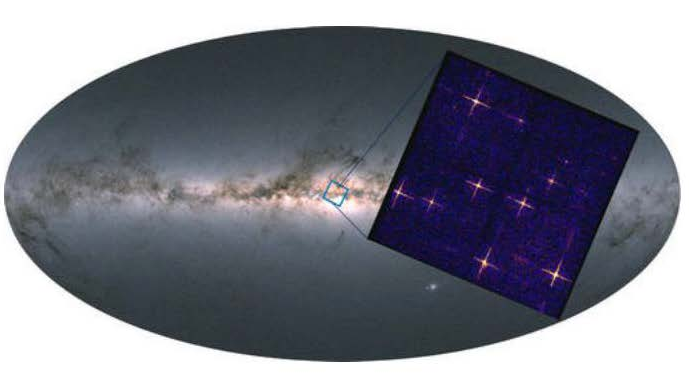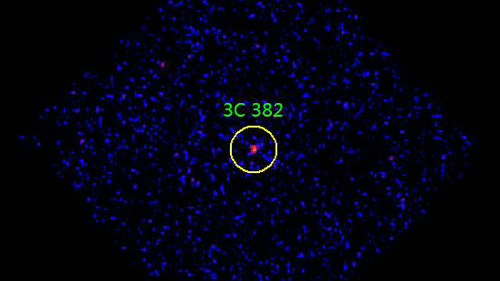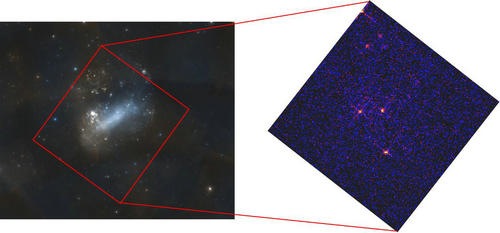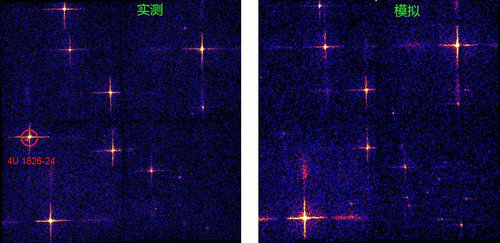
An X-ray image of the central region of the Milky Way by the Wide-field X-ray Telescope module. /NAOC
An X-ray image of the central region of the Milky Way by the Wide-field X-ray Telescope module. /NAOC
Chinese scientists released the world's first large-field X-ray maps of the sky, captured by a Wide-field X-ray Telescope (WXT) during the China Space Science Assembly in Taiyuan City, capital of north China's Shanxi Province, on Saturday.
The WXT is a large-field X-ray imaging telescope, the first of its kind in the world. It was launched into space on July 27 with a spacecraft atop a solid-propellant rocket, according to the National Astronomical Observatories of China (NAOC). The telescope obtained X-ray images and energy spectra of many celestial bodies in the Milky Way galaxy and beyond after a four-day in-orbit observation.
Its field of view can reach 340 square degrees, 100 times larger than other similar telescopes in the world, said the NAOC. The wider the field of view, the more one can see of that observable world.
The WXT observed the central celestial region of the Milky Way. The results showed that a single observation could detect X-rays from multiple directions, including those from stellar black holes and neutron stars.
The probe further spotted the relatively faint X-ray signals from a quasar 814 million light years away. Quasar is a star-like object far away in space that produces bright light and radio waves.

A quasar 814 million light years away detected by the WXT. /NAOC
A quasar 814 million light years away detected by the WXT. /NAOC
A large Magellanic Cloud near the Milky Way galaxy was also spotted within the WXT's radius, according to the NAOC.

An optical image of the large Magellanic Cloud (L) and an X-ray image with the WXT (R). /NAOC
An optical image of the large Magellanic Cloud (L) and an X-ray image with the WXT (R). /NAOC
It is an experimental module for the Einstein Probe (EP) satellite in the pipeline. A total of 12 WXT modules will be mounted on the new satellite.
EP is a mission tasked with discovering celestial bodies that emit X-rays during fierce changes as well as quiescent black holes with transient high-energy radiation. It will be launched in late 2023.
A pilot run in August indicated that the WXT is operating normally, laying a solid foundation for the mission, said the NAOC.
"The results are very exciting and attest to the instrument's capability in obtaining quality scientific data as expected," said Yuan Weimin, chief scientist of the NAOC's EP satellite.
P. O'Brien and R. Willingale, professors at the University of Leicester, said, "The results are impressive … These tests demonstrate the scientific potential of the EP satellite."
(With input from Xinhua)

An X-ray image of the central region of the Milky Way (L) and its simulation image (R). /NAOC
An X-ray image of the central region of the Milky Way (L) and its simulation image (R). /NAOC

